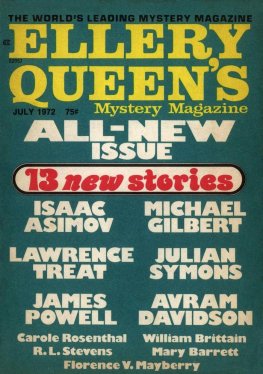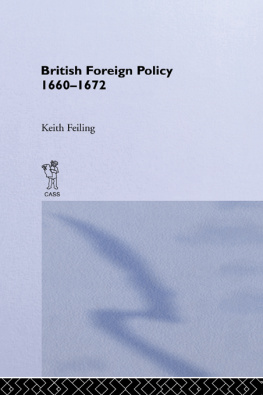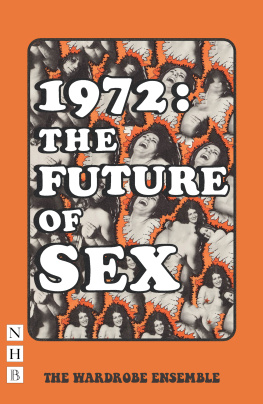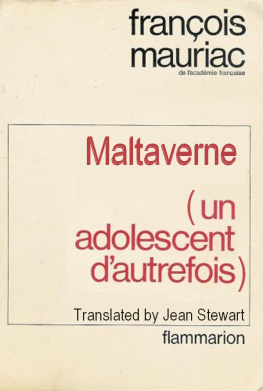First published 1974 by International Arts and Science Press, Inc.
Reissued 2018 by Routledge
2 Park Square, Milton Park, Abingdon, Oxon OX14 4RN
711 Third Avenue, New York, NY 10017, USA
Routledge is an imprint of the Taylor & Francis Group, an informa business
Copyright Andrew Shonfield, 1972, 1973, 1974
No part of this book may be reprinted or reproduced or utilised in any form or by any electronic, mechanical, or other means, now known or hereafter invented, including photocopying and recording, or in any information storage or retrieval system, without permission in writing from the publishers.
Notices
No responsibility is assumed by the publisher for any injury and/or damage to persons or property as a matter of products liability, negligence or otherwise, or from any use of operation of any methods, products, instructions or ideas contained in the material herein.
Practitioners and researchers must always rely on their own experience and knowledge in evaluating and using any information, methods, compounds, or experiments described herein. In using such information or methods they should be mindful of their own safety and the safety of others, including parties for whom they have a professional responsibility.
Product or corporate names may be trademarks or registered trademarks, and are used only for identification and explanation without intent to infringe.
Publisher's Note
The publisher has gone to great lengths to ensure the quality of this reprint but points out that some imperfections in the original copies may be apparent.
Disclaimer
The publisher has made every effort to trace copyright holders and welcomes correspondence from those they have been unable to contact.
A Library of Congress record exists under LC control number: 73092713
ISBN 13: 978-1-138-03784-7 (hbk)
ISBN 13: 978-1-315-17764-9 (ebk)
This is an anti-ideological book. In introducing it to an American audience I feel impelled to stress that point because so much of the ideology which has guided the movement towards European union is of an American brand, if not directly of American origin. The institutions of the European Community seem to have been consciously designed on a model inspired by the United Statesas if to extrude ready-made federal government out of the European Commission, acting with the advice and consent of the Council of Ministers, in the guise of a Senate, and under the watchful eye of a Supreme Court, the European Court of Justice in Luxembourg.
Whether consciously or not, the constitutional stage setting for the piece of European history that was to have been played out from the signing of the Treaty of Rome onwards was modelled on American precedentthe advance from the Articles of Confederation of the thirteen states in 1777 to the Federal Constitution of 1787. In the atmosphere generated by the founding fathers of Europe in 1958, ten years seemed none too short a time to complete a similar advance to federal union on this side of the Atlantic. The fact that at that stage the situation of the European Economic Community paralleled that of the Confederation of the United States where, as Alexander Hamilton put it, "the concurrence of thirteen distinct sovereign wills is requisite, under the Confederation, to the complete execution of every important measure that proceeds from the union," was regarded as a barrier that was made in order to be overcome.
It proved in the event to be a barrier of quite a different order. The citizens of these European states have continued to think of themselves as separate nations; their will to national distinctness has not diminished; and they look to their governments just as much as ever to protect their national interests. But what has happened is that for a variety of purposes, steadily increasing in number, their capacity to make separate decisions has in reality been undercut. There is a dim awareness that this process as it continues must also in the long run involve a shift in certain sentiments of loyalty. That is the logic of establishing the habit of substituting for a preferred national decision a compromise agreed with a lot of foreigners. But the political significance of the new habit percolates slowly, not merely to the minds of ordinary citizens but also to those of their governments.
The question to which I address myself in the following chapters is: Assuming that the conditions of sentiment and political behavior just described endure for a number of years without the metamorphosis which the United States underwent between 1777 and 1787, what is likely to be the performance of this incipient European confederacy? What are its capacities and its limitations? Can it retain the very loose form of confederal structure in the long run and effectively manage its own affairs? How will it in these circumstances handle its relations with the rest of the world, and most particularly with the superpower which provides the pivot of the Western system?
The very last question, about the future of the U.S.-EEC relationship, is probably the crucial one in the context of the mid-1970s. It is crucial in the sense that unless the Community can achieve without too much delay the minimum of consensus among its own members that is necessary for the formulation of joint policies towards the United States on the major issues which concern both sides, it is most unlikely to be able to reach agreement on a number of domestic matters that have to be settled in common in order to make it possible to establish a European economic union. This is partly because the two sets of problems, those connected with internal and with external policies, are so closely bound up with one another. The point emerges most obviously in connexion with European and international monetary affairs: the EEC contains six members of the Group of Tencollective decisionor, at worst, by the lack of itthe shape of the world that will replace the worn-out Bretton Woods system. But more generally, the individual member countries of the EEC, beginning with Germany but including several others, have too much at stake in their relations with the United States; they could not manage to disagree about these relations in a serious way while maintaining their solidarity on other matters unimpaired.
The issue can be put more brutally by saying that the United States, if it were tempted to do so, has ample scope for dividing its allies in Western Europe. Giving in to the temptation would of course represent a drastic reversal of America's posture in world affairs. The U.S. has invested a vast amount of political as well as economic capital in the process of European unification since the war, and has done so to considerable effect. The very nature of the complaints that American statesmen make about it, like Secretary of State Kissinger's complaint that the Europeans now see their common interests as being essentially regional, in contrast to the global interests of the United States, is a tribute to the scale of this effect. But as shows, there is nevertheless a formidable list of subjects, not all of them by any means created by the Europeans, on which frictions, some of them serious, are quite likely to arise.
That list was constructed before the problem of managing the international oil and energy shortage had emerged in an acute form in the wake of the 1973 Arab-Israeli war. Here is another, and especially dangerous, source of friction. But it is also, like several of the other problems listed, an example of how, in spite of sometimes sharp disputes about the short-term balance of advantage, the two sides of the Atlantic are irretrievably locked in with one another. Even though America's natural resources make it much less vulnerable than Europe to the pressures of Middle East oil-producing countries, the United States would be most profoundly affected if the functioning of the European economy were seriously disrupted through shortages of energy. It would be recognized in the late 1970s, just as it was at the time of the Marshall Plan in the late 1940s, that the prevention of social and economic chaos in Europe is a major United States interest. There is, if anything, more at stake now than there was then. The essential argument underlying this survey of the European Community's prospects at the time of its enlargement from six to nine members has been reinforced by subsequent events, of which the international energy crisis at the end of 1973 was only the most obvious and extreme example. It is that the time scales of Western Europe's two sets of policy decisions, those attendant on the process of internal coordination and those concerned with the construction of a coherent external policy, have been transformed. As originally conceived by the founding fathers of the Community, the pace was to be set exclusively by reference to the domestic institutional needs of a European union in course of constructing itself. It was as if an architect had arranged with his clients to concentrate wholly on the internal arrangements of rooms and floor spaces, leaving the outside of the building to derive whatever shape it could from the process of minute interior planning. Occasionally, the neighbours complained about some objectionable feature of the building, and then the architect reluctantly went outside and agreed, after some haggling, to change the position of a wall or a door or straighten out a bulge. But it was all regarded as an annoying diversion. Meanwhile, as the building grew in size, and especially after the addition of a vast new wing, protest from those outside rose to a crescendo. However, the owners inside and their architect were now so set in their habits of planning that they tended to treat almost any protest as an expression of hostility towards their whole enterprise. An ideological principle about the primacy of the internal was now at stake.












